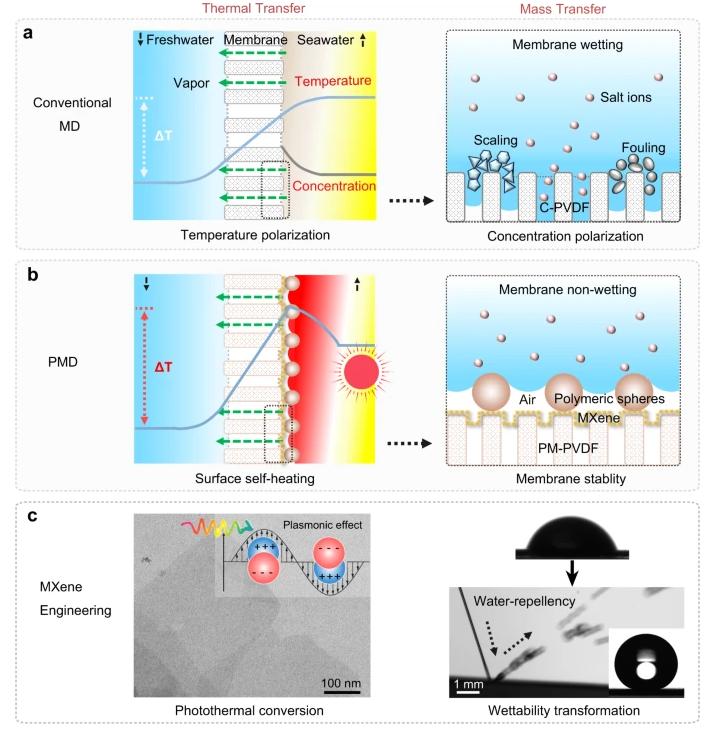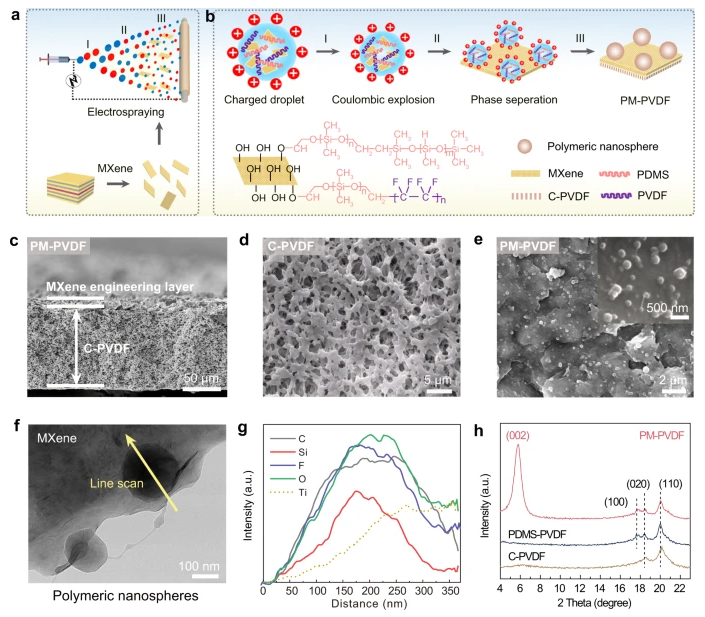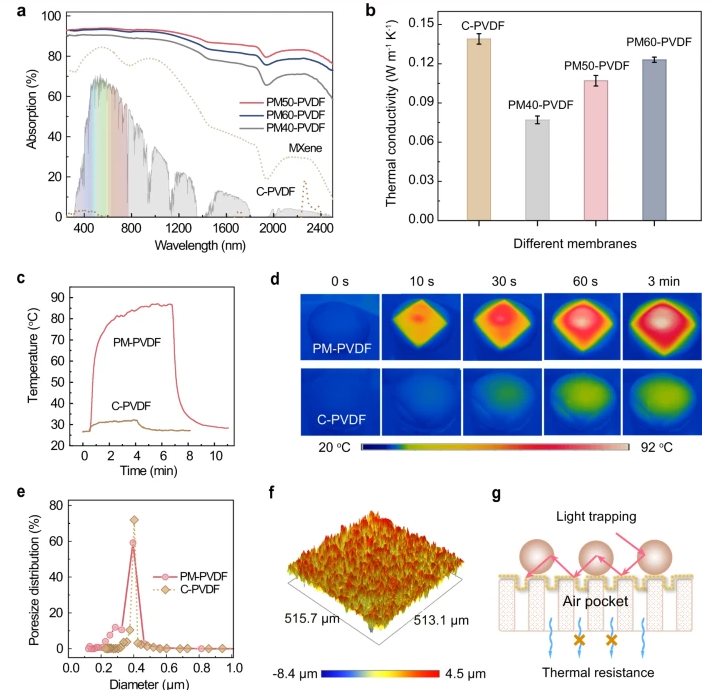Transforming Ti3C2Tx MXene’s intrinsic hydrophilicity into superhydrophobicity for efficient photothermal membrane desalination
QQ Academic Group: 1092348845
Detailed
Owing to its 100% theoretical salt rejection capability, membrane distillation (MD) has emerged as a promising seawater desalination approach to address freshwater scarcity. Ideal MD requires high vapor permeate flux established by cross-membrane temperature gradient (∆T) and excellent membrane durability. However, it’s difficult to maintain constant ∆T owing to inherent heat loss at feedwater side resulting from continuous water-to-vapor transition and prevent wetting transition-induced membrane fouling and scaling. Here, we develop a Ti3C2Tx MXene-engineered membrane that imparts efficient localized photothermal effect and strong water-repellency, achieving significant boost in freshwater production rate and stability. In addition to photothermal effect that circumvents heat loss, high electrically conductive Ti3C2Tx MXene also allows for self-assembly of uniform hierarchical polymeric nanospheres on its surface via electrostatic spraying, transforming intrinsic hydrophilicity into superhydrophobicity. This interfacial engineering renders energy-efficient and hypersaline-stable photothermal membrane distillation with a high water production rate under one sun irradiation.

Fig. 1: Design concept of the PM-PVDF membrane for PMD.

Fig. 2: Fabrication and structural characterization of membranes.

Fig. 3: Photothermal effect and thermal conductivity of membranes.

Fig. 4: Water repellency and membrane wetting resistance.

Fig. 5: Demonstration on performance of hypersaline desalination by PMD.
- Previous: Flexible Nanocomposite
- Next: MXene breakthrough: Na


 mxene academic
mxene academic
 16902670202.jpeg
16902670202.jpeg